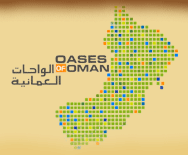Oasis agriculture in Oman has an ancient history but given the rapid transformation of this country’s economy heavily influenced by petroleum exploitation since the 1970s it is rapidly changing in structure and extent. Hundreds of traditional Aflaj (sing. falaj) based settlements have been abandoned since and a millennia-old mode of life with its cultural and genetic resources is threatened by extinction.
These observations and reflections gave rise to the establishment of the joint documentation and research project on "Oases of Oman". A preliminary discussion on the necessity of recording and documenting abandoned endangered settlements quarters in Oman was initiated in 1995.
In cooperation with specialist from the Sultan Quaboos University, different academic disciplines were integrated into the project including history by the University of Tübingen, archaeology by the German Archaeological institute, architecture and urban planning by the University of Stuttgart and agriculture by the University of Kassel.
Preliminary surveys carried out in 1995 – 1997 aimed at gaining a better insight into the extent of the necessary documentation, along with the typology and conservational conditions of traditional oasis settlements in order to select areas of particular interest.
A two-year pilot study was supported within the framework of the Research Program for Baden-Württemberg and the German Institute of Archaeology from 1999 through 2000. To unravel the bio-physical functioning, nutrient fluxes and the settlement history of oases in this part of the Arabian Peninsula, data of topography, the agricultural setting, water and soil characteristics, urban structure, oral history and archaeological findings were collected in the Wadi Bani Awf with its head oasis Balad Seet in a first phase.
 Final report of the pilot study Final report of the pilot study
The following second project phase (2002-2003), funded by the DFG aimed at a more in-depth, process-oriented understanding of the factors governing the status quo of selected oases along two agroclimatic gradients (across the northern Hajar mountains from Rustaq to Hamra and from Wadi Tiwi to Ibra) such as their sustainability over the millennia and the driving force for change.
The third phase (2004-2006), also funded by the DFG aims at extending the research area by adding a transect in Inner Oman from Ibra to Nizwa which also includes oases of the unique Jabal Akhdar ecosystem.
In the final phase of this project from January 2007 up to March 2008 we investigate the ecological and socio-economic aspects of crop and livestock husbandry in three selected villages on the Al-Jabal-al-Akhdar range and evaluate development strategies.
|

